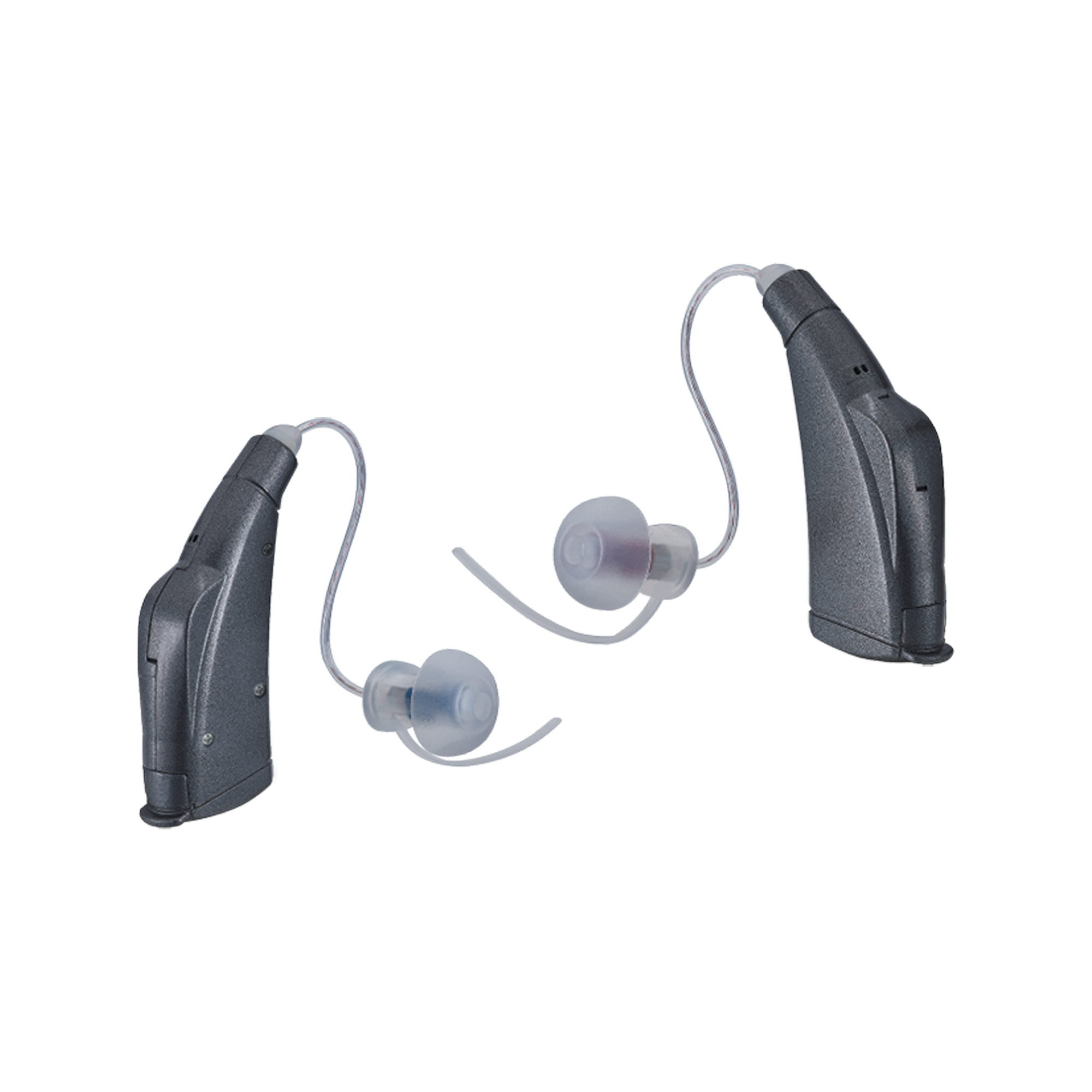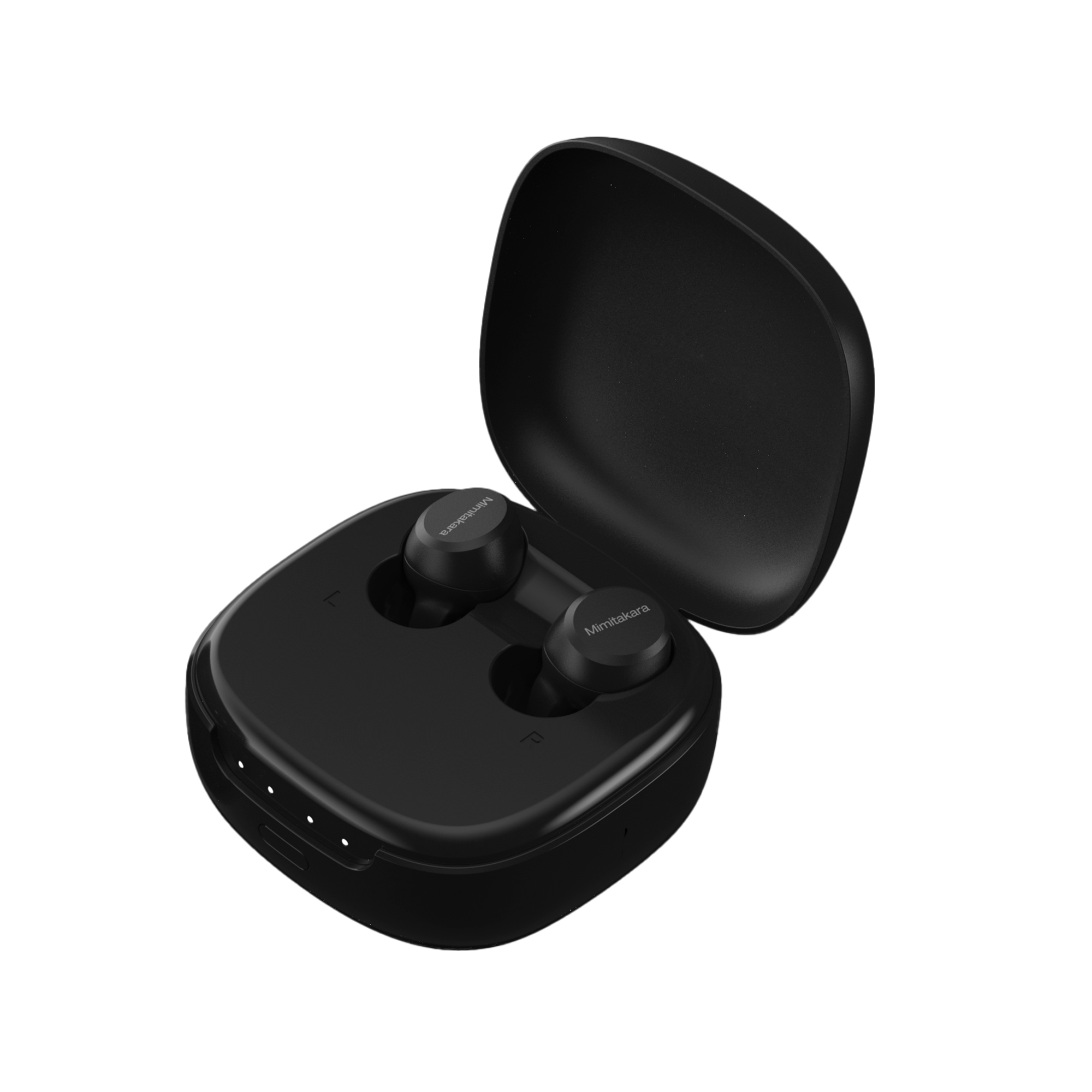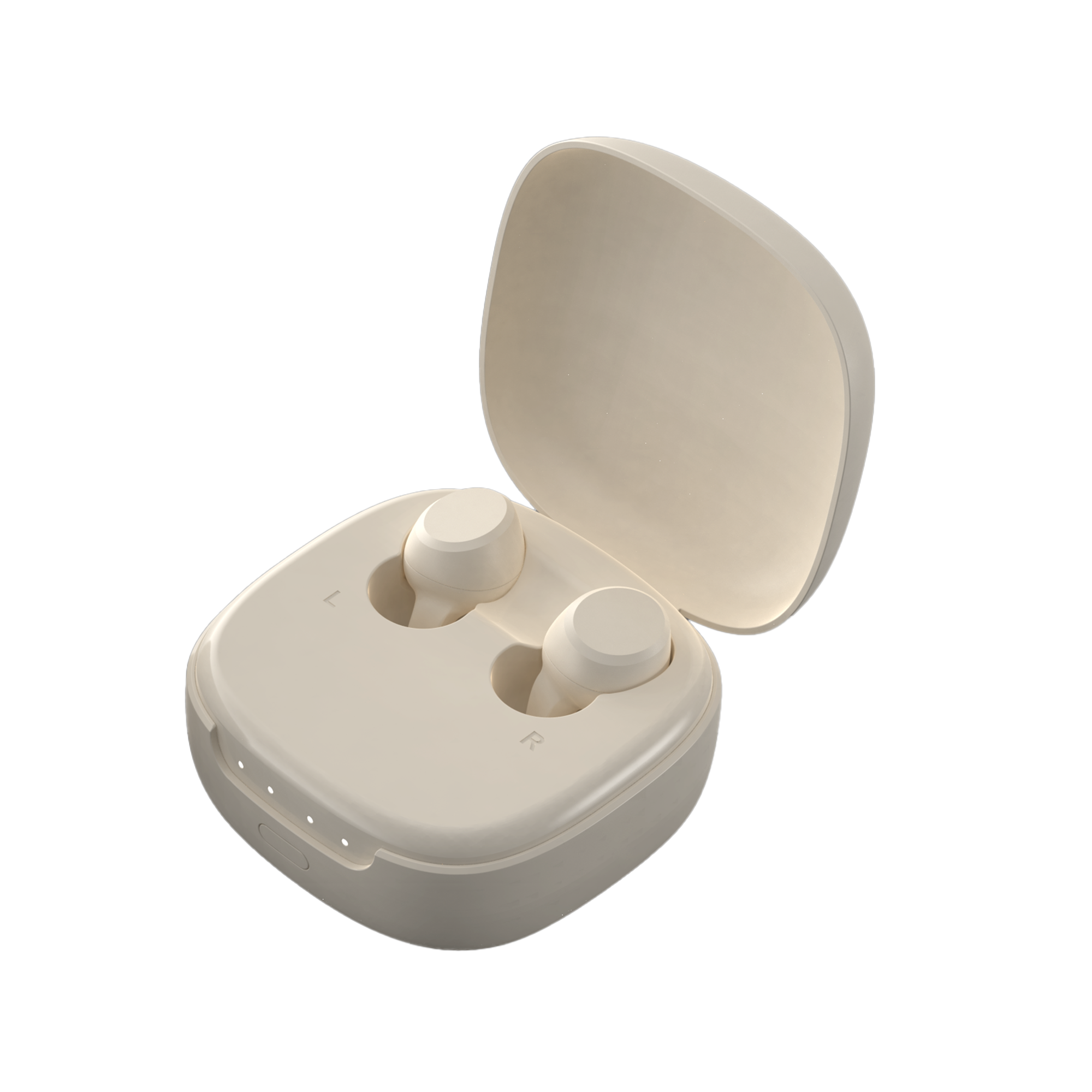 Navigating the cost of hearing aids can be a complex journey for many, especially when considering the leap to more accessible options like over-the-counter (OTC) hearing aids. With the advancements in technology, such as Bluetooth connectivity and customizable hearing aid features, the marketplace now offers a wide range of solutions to cater to varying degrees of hearing loss. These developments bring forth questions about the overall price of hearing aids, the value of professional hearing aid fitting, and how these factors align with the need for affordable hearing care. As the quest for low-cost hearing devices continues, it's essential to understand the primary and secondary costs involved in acquiring hearing aid technology that meets individual needs without compromising quality.
Navigating the cost of hearing aids can be a complex journey for many, especially when considering the leap to more accessible options like over-the-counter (OTC) hearing aids. With the advancements in technology, such as Bluetooth connectivity and customizable hearing aid features, the marketplace now offers a wide range of solutions to cater to varying degrees of hearing loss. These developments bring forth questions about the overall price of hearing aids, the value of professional hearing aid fitting, and how these factors align with the need for affordable hearing care. As the quest for low-cost hearing devices continues, it's essential to understand the primary and secondary costs involved in acquiring hearing aid technology that meets individual needs without compromising quality.
This article aims to shed light on the cost of hearing aids by exploring the various factors that influence the price of OTC and prescription devices, how these costs compare, and what financial assistance options are available, including Medicare and other insurance plans. Additionally, it touches upon the importance of consulting with a hearing care professional to ensure the best fit and functionality of hearing aids. By delving into these areas, readers will gain insights into low-cost hearing aids for seniors, the best over-the-counter hearing aids available, and strategies to navigate the financial aspect of hearing health with confidence.
Understanding OTC Hearing Aids
What are OTC Hearing Aids?
Over-the-counter (OTC) hearing aids are devices available for purchase without a prescription, offering a practical solution for adults experiencing mild to moderate hearing loss. These hearing aids amplify sounds, enhancing the ability to participate in daily activities and improving overall communication 1. Regulated by the U.S. Food and Drug Administration (FDA), OTC hearing aids meet specific safety and effectiveness standards, ensuring they are a reliable option for those who do not require custom fitting by a professional. Unlike prescription hearing aids, OTC models can be adjusted and fitted by the users themselves, providing a more accessible and often less expensive alternative.
Benefits of OTC Hearing Aids
OTC hearing aids offer several advantages, including the ability to buy and fit the devices independently, without the need for professional consultation. This autonomy not only makes them more accessible but also allows users to customize settings to their specific hearing needs using various tools and software. For many, this means improved social interaction and a better quality of life, as they can more effectively manage their hearing loss. Additionally, OTC hearing aids are designed to be cost-effective, with prices significantly lower than many prescription options, making them an attractive choice for those seeking hearing assistance without substantial financial investment. Furthermore, the use of these devices has been linked to decreased cognitive decline and other health benefits, underscoring their value beyond mere hearing improvement.
Factors Influencing the Cost of OTC Hearing Aids
Technology and Features
The cost of Over-the-Counter (OTC) hearing aids is significantly influenced by the type of technology and features they offer. Devices that include advanced features such as Bluetooth connectivity, tinnitus masking, and noise-canceling capabilities tend to be more expensive. Additionally, the rapid evolution of hearing aid technology means that newer models may incorporate more sophisticated features, which can also drive up the price. The complexity of these features often requires more intricate manufacturing processes and can lead to higher costs for the consumer.
Brand and Manufacturer
Another crucial factor affecting the cost of OTC hearing aids is the brand and the manufacturer. Major brands that dominate the market may charge higher prices due to their established reputation and the perceived quality of their products. The control these brands have over the manufacturing and distribution process can limit competition, keeping prices high. Furthermore, the market share controlled by a few major manufacturers allows them to set premium prices, especially if their devices include unique features or proprietary technology.
Additional Services
While OTC hearing aids generally cost less than prescription hearing aids, the price can increase significantly when additional services are considered. For instance, some OTC models might require frequent replacement of batteries, or users might need to purchase special cleaning tools and products. Additionally, the lack of professional fitting and follow-up care typically associated with prescription hearing aids means that users might face additional costs if they require adjustments or repairs. The absence of a mandatory return policy also means that consumers could incur further expenses if the devices do not meet their needs.
Comparing Prices: OTC vs. Prescription Hearing Aids
Average Costs
Prescription hearing aids, often provided by audiologists, come with a comprehensive service that includes professional fitting, device programming, and follow-up visits, contributing to their higher cost. These devices typically range from $1,000 to over $8,000 per pair, with an average cost around $4,600. In contrast, OTC hearing aids offer a more budget-friendly solution. Since their approval by the FDA in 2022, these devices have been priced significantly lower, generally under $1,000 per pair, making them accessible for individuals with mild to moderate hearing loss.
What Contributes to High Costs?
The high costs of prescription hearing aids are largely due to the extensive services bundled with the purchase. These include custom fittings, maintenance, and routine cleanings, which can alone start at prices such as $1,500. Additionally, the limited competition in the market allows manufacturers to maintain high prices. The cost of research and high-quality materials like microprocessors also escalate the production expenses. Conversely, OTC hearing aids typically exclude these professional services and utilize less advanced technology, which helps keep their prices lower.
How OTC Aims to Lower Expenses
OTC hearing aids aim to reduce costs by eliminating the need for professional fittings and follow-up care, which are mandatory with prescription aids. This not only lowers the initial price but also reduces long-term maintenance costs. The FDA's new regulations support this initiative by providing consumers with more affordable choices, estimating savings of approximately $2,800 per pair compared to prescription devices. This approach not only makes hearing aids more accessible but also challenges the traditional high-cost healthcare model by introducing competitive pricing in the market.
Insurance and Financial Assistance Options
Insurance Coverage
Generally, health or medical insurance does not cover the purchase of hearing aids, and coverage varies by private health insurance plan. Some insurers provide partial or full coverage, while others offer none. Medicare Advantage and some private insurance plans now include benefits for hearing care. It is essential for individuals to review their insurance contracts or contact their insurance providers to understand the specifics of their coverage. Notably, UnitedHealthcare is evaluating the inclusion of OTC hearing aids in its commercial plans, potentially offering significant discounts.
Financing and Payment Plans
Many hearing aid providers, including OTC companies, offer financing options that allow consumers to spread the cost over time. CareCredit and similar programs provide financing options that may include zero-interest periods or reduced rates for longer terms, making the purchase of hearing aids more manageable. Additionally, some clinics and retailers offer zero-interest installment plans, which can alleviate the upfront financial burden.
Other Financial Aid Options
Various financial aid options are available for those who qualify. Medicaid covers the cost of hearing aids in many states, particularly for children, and some states mandate coverage for adults as well. Veterans may receive hearing aids at no cost through the U.S. Department of Veterans Affairs. Nonprofit organizations and charities also offer assistance, providing free or low-cost hearing aids to those in need based on financial criteria. Furthermore, health savings accounts (HSAs) and flexible spending accounts (FSAs) allow individuals to set aside pre-tax dollars for medical expenses, including hearing aids, potentially saving significant amounts on taxes.
Conclusion
Throughout this exploration of the costs associated with OTC hearing aids, we've navigated the terrain of financial considerations, technology nuances, and market dynamics that shape the accessibility and affordability of hearing solutions. The journey has underscored the significance of understanding the full spectrum of costs—from initial purchase to long-term maintenance—and highlighted the role that insurance and financial assistance play in making hearing care more attainable. By emphasizing the importance of consulting with hearing care professionals, even when opting for OTC models, this article has aimed to empower readers with the information needed to make informed choices that best suit their hearing needs and financial circumstances.
The move towards OTC hearing aids represents a pivotal shift in making hearing care more accessible and affordable, reflecting broader implications for public health and policy. As consumers navigate their options, the insights provided here serve as a valuable guide for understanding the financial landscape of hearing aids, fostering a more inclusive environment for those seeking to improve their hearing health. Going forward, the continued innovation and regulation of OTC hearing aids will likely offer even greater opportunities for individuals to access the hearing support they need, marking a significant step forward in the quest for comprehensive and cost-effective hearing care solutions.
FAQs
1. What is the typical price range for a quality set of hearing aids?
The cost for a pair of high-quality adult hearing aids typically falls between $2,000 and $4,000. However, prices can start as low as $1,000 and exceed $4,000 per device, largely depending on the technological features included.
2. What does the regulation say about over-the-counter hearing aids?
As of August 2022, the final regulation permits the sale of over-the-counter (OTC) hearing aids directly to consumers either online or in physical stores, without the need for a medical examination or professional fitting by an audiologist. It's important to note that this rule applies only to adults with mild to moderate hearing loss. Hearing aids intended for severe hearing loss or for individuals under 18 still require a prescription.
3. How effective are off-the-shelf hearing aids?
According to Dr. Naples, off-the-shelf or OTC hearing aids can be beneficial for individuals with mild to moderate hearing loss. However, they may not be suitable for all hearing loss types. These devices are somewhat analogous to over-the-counter reading glasses, which are designed to address a particular vision issue.
4. Do over-the-counter hearing aids perform as well as prescription hearing aids?
While OTC hearing aids can be a viable option for those with mild to moderate hearing loss who perceive a need for assistance, they do have limitations. Prescription hearing aids, on the other hand, offer a more tailored and sophisticated treatment for individuals with severe hearing loss or specific auditory requirements.










